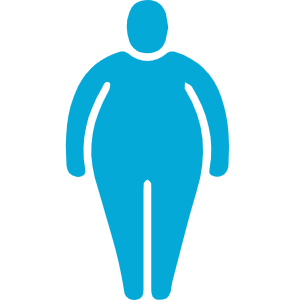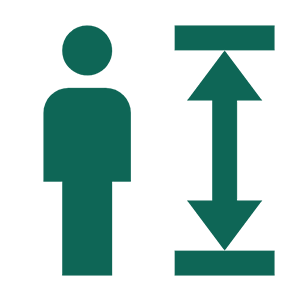Amputation IBW: How to Accurately Calculate Your Ideal Body Weight After Limb Loss
After an amputation, many people face not only physical adaptation but also the challenge of redefining their health goals. A common question is, "What should my ideal body weight be now?" Amputation changes the body's structure, making traditional ideal body weight formulas less applicable, as they do not account for the loss of body mass. Therefore, a scientific approach is needed to adjust and calculate accordingly—this is where Amputation IBW (Ideal Body Weight) comes in.
This article will guide you through why recalculating ideal body weight after an amputation is necessary and provide a simple, practical method to do so. Even without specialized tools, you can use a standard IBW calculator with an adjustment formula to quickly determine your ideal healthy weight range. Let's explore how you can use science and logic to redefine your health goals!
Why Do You Need to Recalculate Ideal Body Weight After Amputation?
Calculating ideal body weight after an amputation is more than just a numerical adjustment—it's about redefining how you manage your health. Here are three key reasons why this recalculation is essential:
1. Changes in Body Structure Make Traditional Formulas Inapplicable
Ideal body weight (IBW) is typically calculated using height and gender with traditional formulas. However, amputation results in a reduction of body mass, which directly affects total weight. If you continue using the standard IBW formula, it will overestimate your needs, potentially making health management plans inaccurate.
For example:
- A 170 cm (5'7") tall male has a standard IBW of 65.9 kg (145 lbs).
- If he loses a lower leg (which accounts for roughly 5.9% of total body weight), his adjusted ideal weight should be 65.9 × (1 - 0.059) ≈ 62 kg (137 lbs).
2. Precision Is Crucial for Health Management
Ideal body weight is a critical component when designing health plans, such as:
- Determining daily caloric and nutritional needs.
- Setting exercise goals and rehabilitation plans.
The ideal weight after amputation is more than just a number—it's a precise reflection of your body's energy needs and actual state. Ignoring this adjustment could lead to undernutrition or overeating, impacting your recovery process.
3. Redefining Health Goals Beyond Weight Alone
Beyond physical changes, amputation may bring psychological challenges. Redefining your ideal weight helps you find a suitable health goal in your new body state. It’s not just about a number—it’s about pursuing a positive and active lifestyle.
How to Calculate Ideal Body Weight After Amputation
Amputation IBW requires a scientific adjustment to the traditional IBW, factoring in the proportion of the body that was amputated. Here’s a step-by-step guide on how to calculate it.
1. Traditional IBW Calculation Formulas
Before the amputation, ideal body weight can be calculated using the following formulas:
- Devine Formula (commonly used for adult health assessments):
- Hamwi Formula (another common method):
These formulas help you quickly determine your baseline IBW before amputation.
2. Amputation Adjustment Formula
Based on human anatomy, the adjusted IBW after amputation needs to consider the proportion of body weight represented by the amputated part:
$$ IBW_{amputation} = IBW_{normal} × (1 - \text{percentage of body weight represented by amputated part}) $$Here are approximate body weight percentages for common amputations:
| Amputation Site | Weight Percentage (Approx.) |
|---|---|
| One arm | 5%–6% |
| Forearm and hand | 2.3% |
| One leg (above knee) | 15%–18% |
| Lower leg and foot | 5.9% |
| Both legs | 30%–37% |
4. Important Considerations
- Individual Differences: These percentages are general references, and the actual value can vary based on the length of the remaining limb and other factors.
- Personal Adjustments: Partial amputations (e.g., half of the lower leg) need further fine-tuning.
- Seek Professional Advice: In complex cases, consult with your doctor or a nutritionist.
How to Adjust Using a Standard IBW Calculator?
Although Healthycalc doesn't currently have a dedicated amputation IBW calculator, you can still use the existing standard IBW calculator and make a simple manual adjustment to get an accurate weight estimate. Here’s how:
1. Calculate Baseline IBW
First, use Healthycalc's IBW calculator to find your baseline ideal body weight.
- Enter your gender and height into the calculator.
- The system will provide a standard IBW based on formulas like the Devine Formula.
For instance:
- A 170 cm (5'7") tall male has a baseline IBW of 65.9 kg (145 lbs).
2. Adjust Based on Amputation
With your baseline IBW calculated, follow these steps to adjust:
- Find the Weight Percentage of the Amputated Part:
For example, lower leg amputation represents about 5.9% of body weight. - Use the Adjustment Formula:
Multiply your baseline IBW by (1 - “weight percentage”) to get the adjusted ideal weight.
The formula is:
$$ IBW_{amputation} = IBW_{baseline} × (1 - \text{weight percentage}) $$For example:
- Baseline IBW is 65.9 kg (145 lbs), and lower leg amputation is 5.9%:
Frequently Asked Questions
When calculating ideal body weight after amputation, you might have some questions or concerns. Here are some of the most common ones to help you out!
1. What if I Can't Find My Amputation Site's Weight Percentage?
Don’t worry—the percentages provided are common references. If your amputation site or situation isn’t listed, try one of these options:
- Estimation: Use a weight percentage from a similar body part as a rough estimate.
- Consult a Professional: Doctors or rehab specialists can provide a more accurate adjustment.
2. Why Is the Weight Range More Important After Amputation?
Post-amputation weight management focuses more on a “range” rather than an exact number because:
- The metabolic needs of the body vary with factors like age and activity level.
- Focusing too much on a precise figure might overlook overall health management.
We recommend using the adjusted IBW as a baseline while maintaining a focus on balanced nutrition and healthy body composition.
3. Will My Weight Change Over Time? Should I Adjust My Ideal Weight?
Yes, your weight can change over time after an amputation, especially during:
- Rehabilitation: Reduced activity may lead to weight gain.
- Long-Term Living: Your weight may gradually stabilize as your body adapts.
It's a good idea to reassess your ideal weight every 6 to 12 months and adjust your diet and exercise plan accordingly.
4. What If There’s a Large Gap Between My Ideal Weight and Actual Weight?
This is quite common, particularly in the early stages after an amputation or during recovery. Here’s what you can do:
- Prioritize Health: Ideal weight is a goal, not a strict requirement.
- Gradual Changes: Adjust your diet, exercise, or rehab plan to move closer to your ideal range over time.
- Seek Support: A rehab specialist or nutritionist can help you create a personalized plan.
5. Is the Healthycalc IBW Calculator Right for Me?
While Healthycalc doesn’t have a specific amputation IBW tool yet, the existing IBW calculator is still a good way to get a baseline. You can then make manual adjustments to estimate your target weight accurately.
If you’d like to see a dedicated amputation IBW tool in the future, feel free to let us know! Healthycalc is always striving to create more practical health tools.
6. Are There Other Calculators to Help Manage My Health?
Yes! In addition to the IBW calculator, Healthycalc also offers:
- TDEE Calculator: Helps you estimate your daily energy requirements.
- BMI Calculator: Lets you check if your weight is in a healthy range.
These tools can be used together to provide a comprehensive approach to managing your health.












 EN
EN









